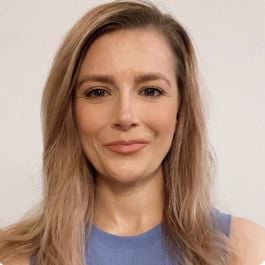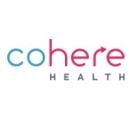From books like The Miracle Morning and My Morning Routine to scores of articles, videos and posts touting habits of highly successful people, there are seemingly endless resources about how structuring the first few waking hours can change the trajectory of an entire day.
Whether the ritual is journaling, meditation, phone-free hours, exercise or inbox zero, one thing seems consistent — a routine that helps people enter their days centered and prepared is a huge boost for the hours that follow.
For customer success managers, mornings are not just the start of a workday — they are a critical time for laying the foundation that will guide their interactions and decisions throughout the day. The morning routine of setting an agenda, prioritizing tasks, triaging important requests and anticipating challenges is essential for ensuring that a CSM can navigate the demands of their role successfully.
Elise Bilodeau, senior manager of client success at Cohere Health, starts her day before clients even log on, setting out her schedule and priorities.
By clearly defining what needs to be accomplished, Bilodeau creates a roadmap that keeps her focused and organized. A well-structured agenda helps prevent the day from becoming reactive, allowing her to stay on course even when unexpected issues arise.
For commercetools’ Ian LaBennett, triaging any messages that came in overnight is the first step to starting a successful day.
In addition to planned tasks, a CSM’s day is often interrupted by incoming requests — some urgent, some not. The ability to quickly triage these requests is crucial for maintaining productivity.
At Flatfile, Anastasia Gilbaugh’s review of morning messages is especially important, as she needs to stay attuned to overnight correspondence from international customers.
Gilbaugh also focuses on prioritizing tasks. A CSM’s role often involves juggling multiple responsibilities, from responding to customer inquiries to collaborating with internal teams. By ranking tasks based on their impact and urgency, Gilbaugh is able to allocate her time and energy where it will make the most difference.
In the role of a CSM, challenges are inevitable — whether it’s a customer who is at risk of churning, a product issue that might escalate or a demanding internal deadline. By taking a few moments each morning to consider what could go wrong during the day, CSMs can prepare themselves mentally and practically for handling these situations.
Bilodeau, LaBennett and Gilbaugh shared more about how they structure their days to support customers, balance internal and client priorities and adapt to the shifting needs each day brings.

Enterprise software company commercetools provides a flexible, cloud-native commerce platform designed to enable businesses to create personalized and scalable shopping experiences across multiple channels.
Give us a snapshot of what a typical workday looks like for you. What are your daily priorities, and where do you start?
As a CSM I love being able to hear about the new and interesting ways our customers use our product to power their solutions across different industries. It’s great when you can provide resources and guidance to help customers realize their goals. I also appreciate the fact that our platform continues to grow and improve, which means there are new things for me to learn all the time. Additionally, I have a lot of flexibility in my days to decide how and when I want to tackle different tasks.
As far as the flow of my average day, after I log on in the morning, I check Slack for any important messages and check my inbox for the same. I also look at my calendar for the day’s events. On any given day I may have multiple meetings with customers and internal teams. I try to consolidate meetings to certain days of the week, which in turn allows for bigger blocks of focus time where other projects can be tackled.
Customer success managers fulfill a vital role in any SaaS company, helping to ensure the efforts during the sales cycle and product development are fully realized. Representing the company to our customers carries a lot of responsibility, but it is also very rewarding.
A Day in the Life of Customer Success Manager Ian LaBennett
Though LaBennett noted that no two days are the same, he highlighted the constants that anchor his usual work week:
- Meet with customers to discuss their plans and how to help enable them
- Learn about new features and other product updates
- Review opportunities to enhance customer relations
- Direct customers to relevant resources and assisting with questions
- Collaborate with internal teams on customer stories, product enhancements and other initiatives
- Collaborate with colleagues to plan activities as co-leader of the BLK Leaders employee resource group
How do you stay in the loop with product and customer updates?
Staying up-to-date with product and customer updates is crucial in my role. To ensure I'm always in the loop, I subscribe to our product update notifications and regularly attend team meetings where we discuss the latest developments and share insights. Additionally, I make it a point to participate in webinars and training sessions offered by our company, which provide in-depth knowledge about new features and improvements. My recurring meetings with customers ensure I am aware of updates they’d like to share.
Connecting with my peers is another essential aspect. We have a culture of knowledge-sharing, so I often touch base with colleagues to exchange information and best practices. This collaborative approach helps me stay informed about how others are addressing similar challenges or leveraging new functionalities. Moreover, I actively follow customer feedback channels to understand their experiences and any issues they might be facing, which in turn helps me provide timely and relevant support.
Are there any organizational principles, words of advice or helpful tools that help you stay on top of things?
To stay organized and efficient, I rely on a few key principles and tools. First and foremost, I prioritize effective time management. By organizing my calendar to group meetings on specific days, I create larger blocks of uninterrupted time to focus on other important tasks. This method reduces context-switching and boosts my productivity.
A crucial piece of advice I follow is to always keep the customer’s perspective in mind. Understanding their needs and goals helps me prioritize tasks that will have the most significant impact. I also believe in continuous learning, whether it’s about new product features or industry trends. This habit not only keeps me informed but also equips me to provide better support to my customers.
In terms of tools, I heavily utilize project management software to track tasks and deadlines. Tools like Gainsight help me visualize my workload and ensure nothing falls through the cracks. Additionally, we use Gong to record calls and summarize important points and follow up actions from meetings. Keeping detailed notes helps me follow up effectively and maintain continuity in ongoing projects.
Ultimately, balancing responsiveness with proactive planning and leveraging the right tools ensures that I stay organized and on top of my responsibilities.
Cohere Health is a healthcare technology company that focuses on improving patient outcomes and reducing costs by streamlining prior authorization and care coordination processes through its AI-driven platform.
Give us a snapshot of what a typical workday looks like for you. What are your daily priorities, and where do you start?
A typical workday for me begins with organizing my schedule and tasks before my clients start their day. I start by reviewing my calendar and to-do list. I prioritize tasks based on deadlines and strategic goals to ensure that the most critical items are addressed first. Given that my day often includes a mix of client and internal meetings, I identify any additional time slots and plan how to use them effectively. I make it a point to check in with my team, offering support and addressing any questions they might have.
As the day progresses, I juggle between internal and external calls while staying adaptable to shifting priorities. At the end of the day, I update my task list, review my calendar for the following day and schedule any necessary focus or preparation time. I also leverage automation tools to schedule-send emails and Slack messages, ensuring that updates, reminders and reports are handled efficiently before my next day even starts!
How do you stay in the loop with product and customer updates?
Staying updated with product and customer developments is a crucial aspect of my role at Cohere Health. Our client success team collaborates closely with the product team to stay informed about the latest updates and educational resources for both ourselves and our clients. At Cohere Health, we cultivate a culture of continuous learning. I leverage various internal tools to track product changes and deepen our expertise, including Slack channels, product release notes, end-of-sprint calls and intensive product bootcamps. It's easy for client success to stay enthusiastic about our product, and we’re fortunate to work with a talented and generous technical team that supports us every step of the way.
Are there any organizational principles, words of advice or helpful tools that help you stay on top of things?
In client success, our core principle is to always ask, “How can I help?” One key organizational method I adhere to is the 80/20 rule — focusing on the 20 percent of tasks that will deliver 80 percent of the results. I also use time-blocking techniques to manage my time effectively.
“One key organizational method I adhere to is the 80/20 rule — focusing on the 20% of tasks that will deliver 80% of the results.”
My team plays a vital role in keeping me motivated by fostering a collaborative environment and celebrating both small and significant achievements. Our motto is “people support what they help create” which is why we lean on one another to deliver the best client success customer experience. We have a very active #kudos channel at Cohere Health and a weekly “wins” readout that highlights our successes.
Cohere Health is on the forefront of changing the utilization management experience for payers, providers and patients. Knowing that our work has a meaningful impact keeps us inspired and driven every day.
Flatfile is a data onboarding platform that simplifies and automates the process of importing, validating and transforming customer data, making it easy for businesses to integrate and manage data from various sources.
Give us a snapshot of what a typical workday looks like for you. What are your daily priorities, and where do you start?
My day tends to be a blend of strategic planning for the customer accounts I manage and hands-on problem-solving. I meet with my customers regularly to ensure they are getting the most out of Flatfile and their needs are being met, which could include a contract renewal conversation, a new feature or product demonstration, a joint session with a solutions architect to work out the optimal workflow for our customer’s onboarding process or a technical Q&A with the customer’s development team. I usually kick off my day with a quick review of my calendar and catching up on emails and Slack messages that may have come through overnight from our international customers.
How do you stay in the loop with product and customer updates?
Slack is our central hub for product and customer updates, so I always make sure I am up to speed on what is being shared in our most important channels. When it comes to research and learning, Flatfile’s engineering and ops team has been building a suite of AI tools that make it really simple and fast to access relevant research information and identify areas for learning and development.
Are there any organizational principles, words of advice or helpful tools that help you stay on top of things?Prioritization is key! You need to be ruthless about prioritizing the right things and make sure you are focusing on what is ultimately most important: our customers. I use a combination of our internal project management tools, a simple to-do list for daily priorities and Slack for communication. My team is incredibly supportive, and we motivate each other through regular check-ins, sharing successes and tackling challenges together — I know I can always count on them if I need to brainstorm a solution or ask for advice!
“Prioritization is key! You need to be ruthless about prioritizing the right things and make sure you are focusing on what is ultimately most important: our customers.”










